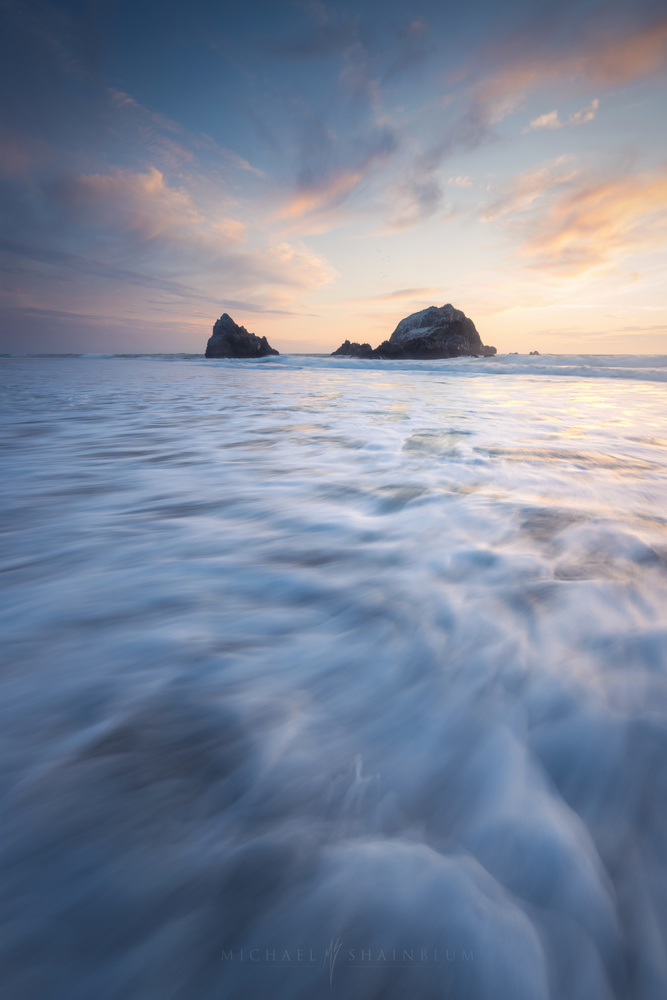The ocean can provide an incredible subject for landscape photographers, especially when photographed in combination with a sunrise or a sunset. Check out this video for an amazing look into one photographer's process for capturing wide angle seascapes.
Coming to you from Michael Shainblum, this video contains some excellent tips for how to capture better seascape images. Photographing sunsets and sunrises can be quite hectic, as the light changes quickly. You may find yourself running around like a madman trying to find a composition. The best thing to do at a location you are unfamiliar with is show up an hour early and give yourself time to play with different compositions.

My go-to setup for seascape photography is my trusty Fujifilm X-T2 with my favorite wide angle lens, the Laowa 9mm f/2.8. I like that I can just set the focus point at infinity and forget about focusing for the rest of the shoot. I also like to use a mechanical shutter release cable, because I am typically using slower shutter speeds to capture motion in the water. Unfortunately, these cables only work with cameras with a threaded shutter release button designed to accept them. If you don't have that sort of camera, you may be better off just using the shutter button with a time delay rather than using a digital shutter remote, as most of these require you to open your side ports to plug in the receiver, at which point you lose your weather sealing.

I also like to use a tripod with spike attachments in place of the rubber feet. My personal favorite is the Feisol CT-3441T with the optional long spike feet. These feet help your tripod dig into the sand and remain stationary while water is rushing past. One of many excellent tips you will find in the video is to really push down on the tripod to help eliminate any movement, which can ultimately result in motion blur in your final images if you aren't careful.
My final tip is to enjoy the sand and go barefoot, assuming your beach isn't too rocky and it is safe to do so. Aside from avoiding wet shoes and socks, this will allow you to connect on a deeper level with the ocean and its environment as you capture its beauty. As photographers, we often tend to come and go with our "eye on the prize," focusing only on the images we have taken, rather than taking the chance to connect with nature. After all, landscape photography is nothing if it doesn't aim to relay that connection with the viewer.

If you are interested in learning more about how to capture seascapes, check out Everything You Need to Know About Photographing Seascapes.
All images used with permission and courtesy of Michael Shainblum.





